Guide to Palos de la Frontera in Huelva province. Columbus made his first voyage to America from this small port.
By Nick Nutter | Updated 8 Apr 2022 | Huelva | Villages |
Login to add to YOUR Favourites or Read Later
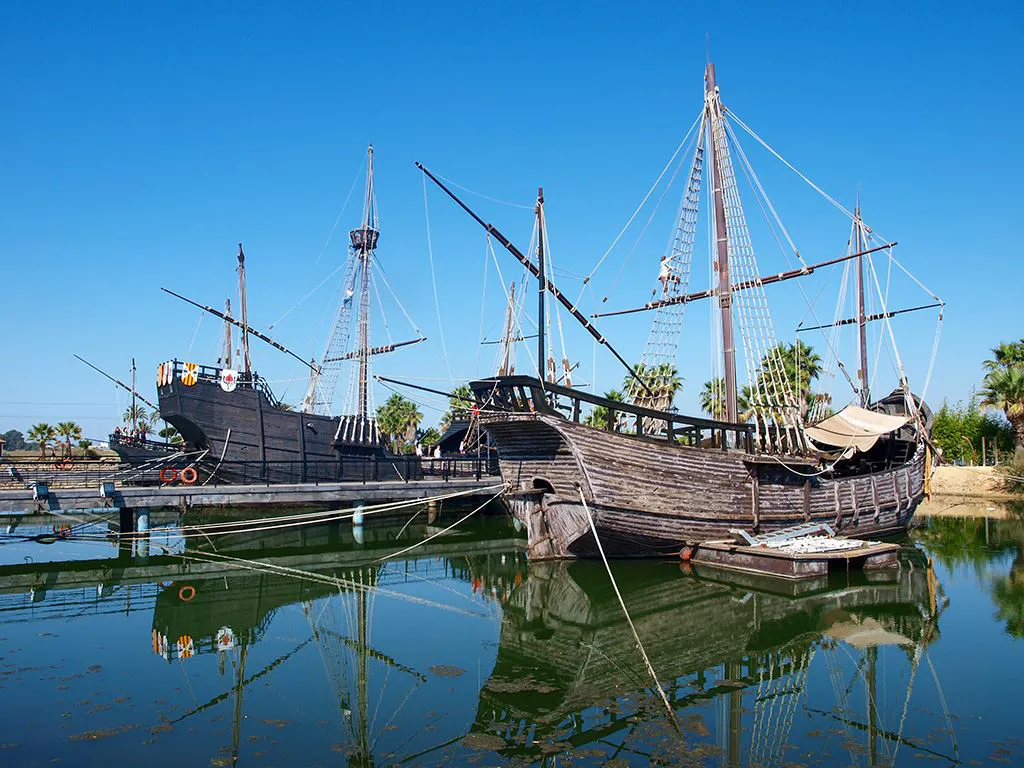
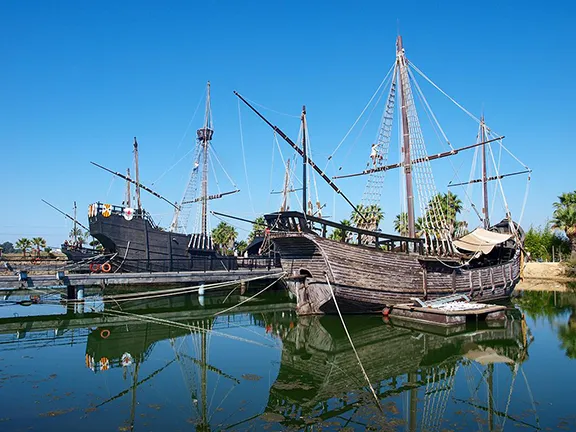
The Pinta, Santa Maria and Nina at Palos de la Frontera
Thirteen kilometres south east of Huelva, near the confluence of the Rio Tinto and Rio Odiel is the small town of Palos de la Frontera. Founded in 1322 as a fishing village it took advantage of the shelter from the Atlantic storms offered by the estuary. Palos men soon gained a reputation for navigation and by the 15th century were trading with Guinea on the west coast of Africa and the Canary Islands. All the Castilian naval forces engaged against the Portuguese in the War of the Castilian Succession included natives of Palos in the crew, such was their reputation.
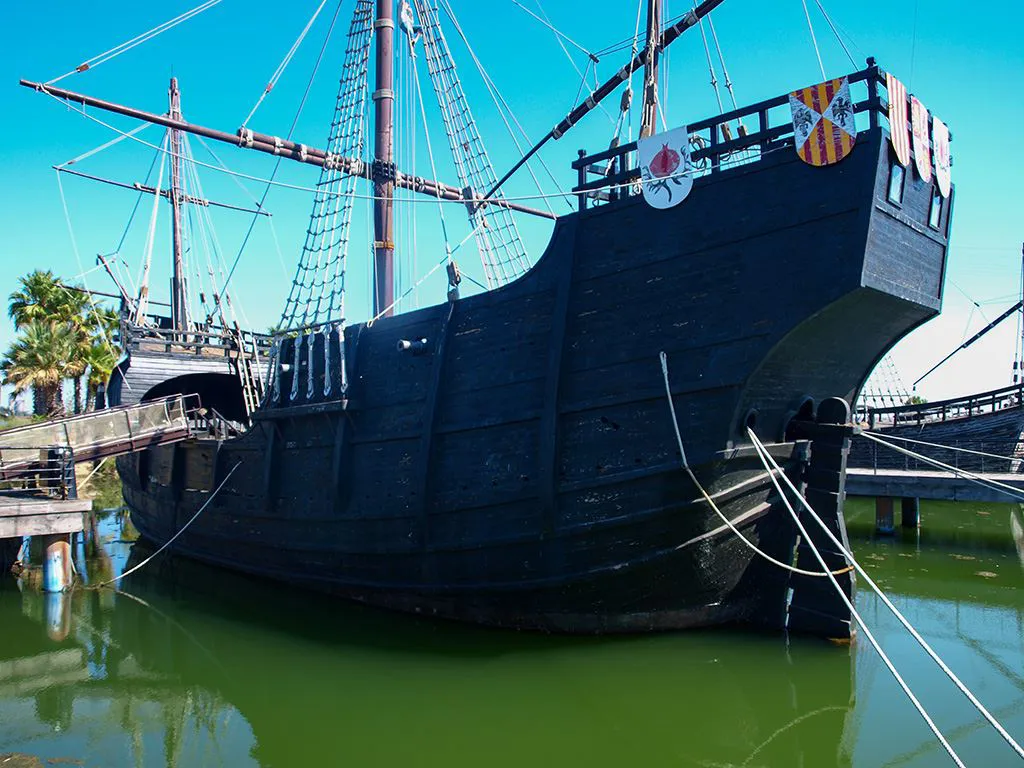
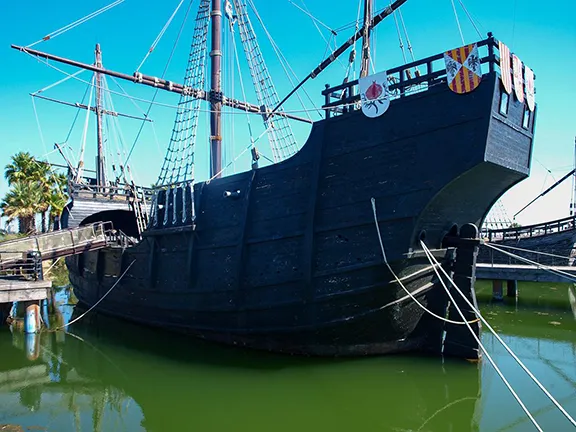
The Santa Maria at Palos de la Frontera
A pleasant enough town, Palos de la Frontera would probably have been less than a footnote in history if it had not been for one man. Christopher Columbus. He arrived at the nearby Franciscan friary of La Rabida, or more properly the Convento de Santa Maria de la Rabida, in 1490 after having his project to sail west in order to find the Indies turned down by Ferdinand and Isabella who were more concerned with finally ejecting the Moors from Spain. Isabella must have given some credence to the idea for she put Columbus on a retainer. The guardian of the friary, Francisco Jimenez de Cisneros, just happened to be confessor to Queen Isabella and it was to him that Columbus turned for help.
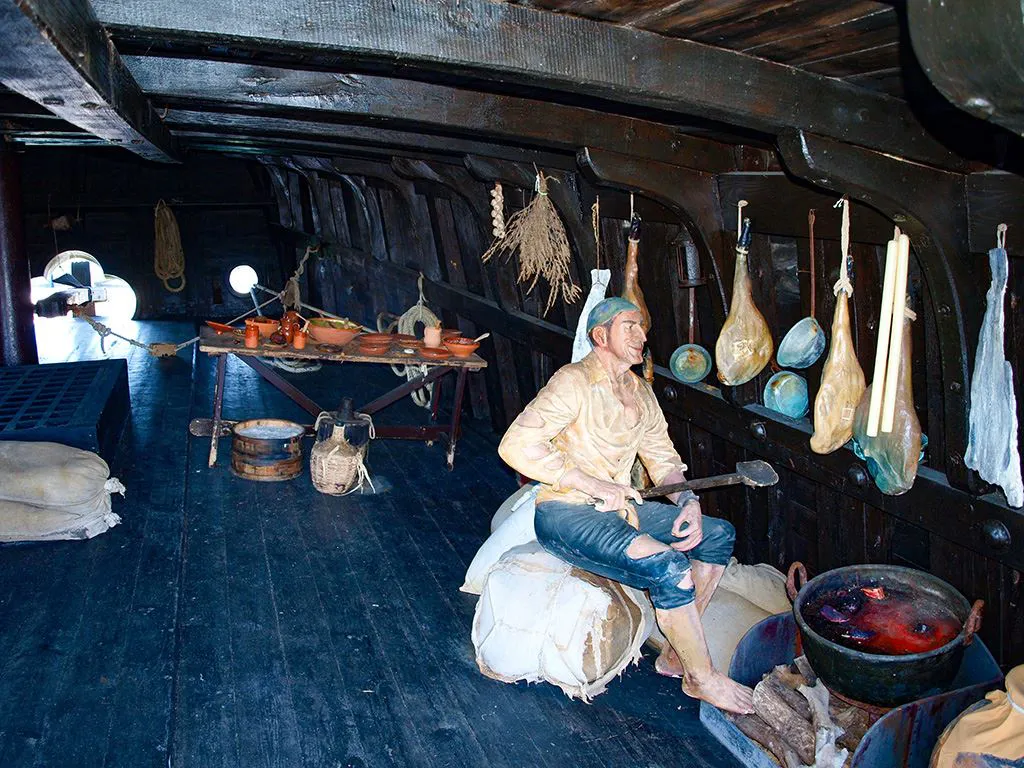
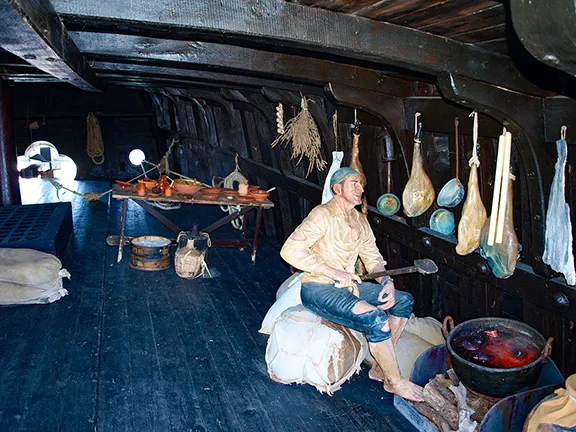
Below Decks at Palos de la Frontera
Columbus needed royal patronage, ships, crew, a navigator and money for provisions and arms. His idea rested on his theory that it was only 2,300 nautical miles west to Japan and he had a map to prove it. The royal couple had taken the advise of their nautical experts who calculated the circumference of the Earth at 25,000 nautical miles and the distance to Japan as 12,200 miles although they did agree with Columbus that since the Earth was a globe it should be possible to sail west in order to reach the east. It is also possible that Columbus, whilst in Madeira or the Castilian owned Canary Islands, had met seafarers who had strayed far enough west driven by the trade winds to actually see land and listened to their stories of lands hidden far over the horizon and assumed they had glimpsed Asia or at least the islands, including Japan, that were known to lie just off the coast from India round to China.
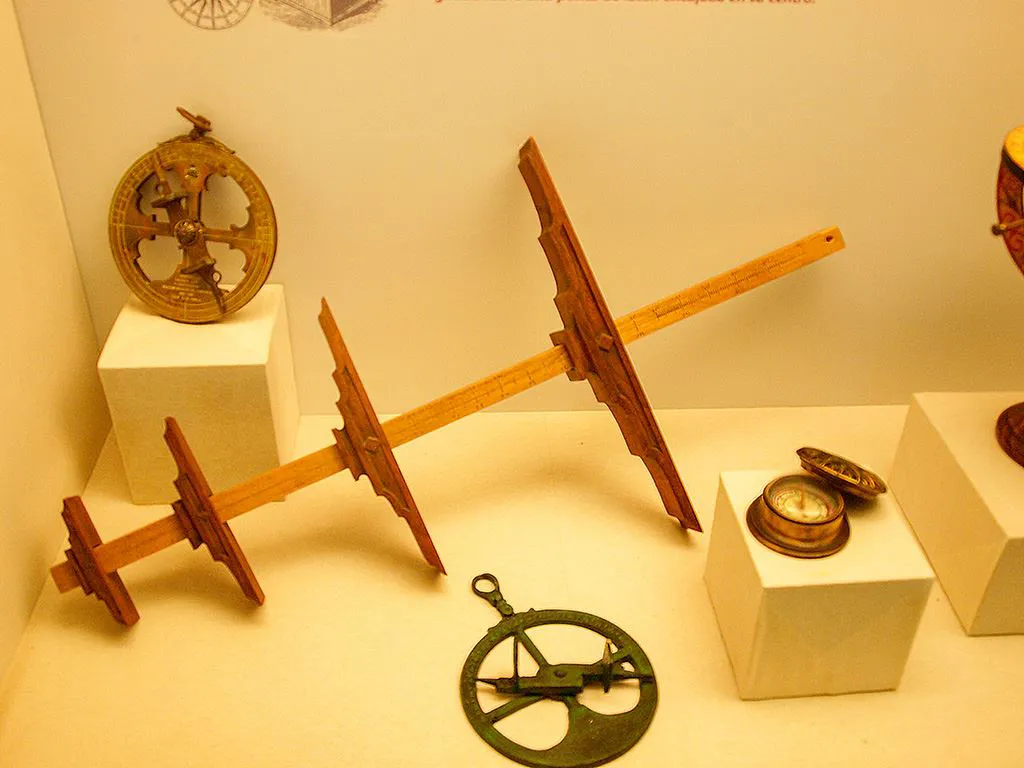
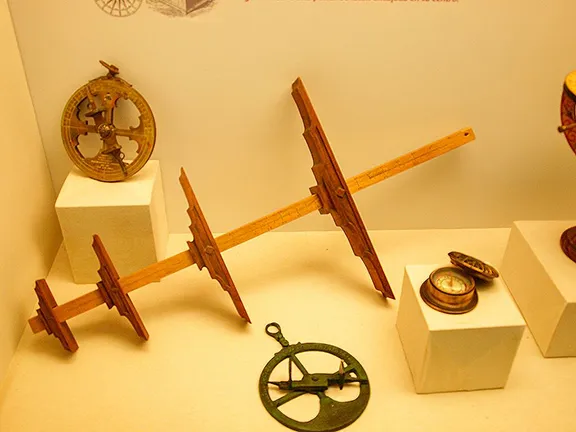
Navigational Tools
He must have been persuasive for in 1492 Francisco was instrumental in getting Columbus another audience with the monarchs. They, flushed with success after retaking Granada, gave royal consent. They promised Columbus that if he succeeded he would be given the rank of Admiral of the Ocean Sea and appointed Viceroy and Governor of all the new lands he could claim for Spain. He had the right to nominate three persons, from whom the sovereigns would choose one, for any office in the new lands. He would be entitled to 10 percent of all the revenues from the new lands in perpetuity. Additionally, he would also have the option of buying one-eighth interest in any commercial venture with the new lands and receive one-eighth of the profits.
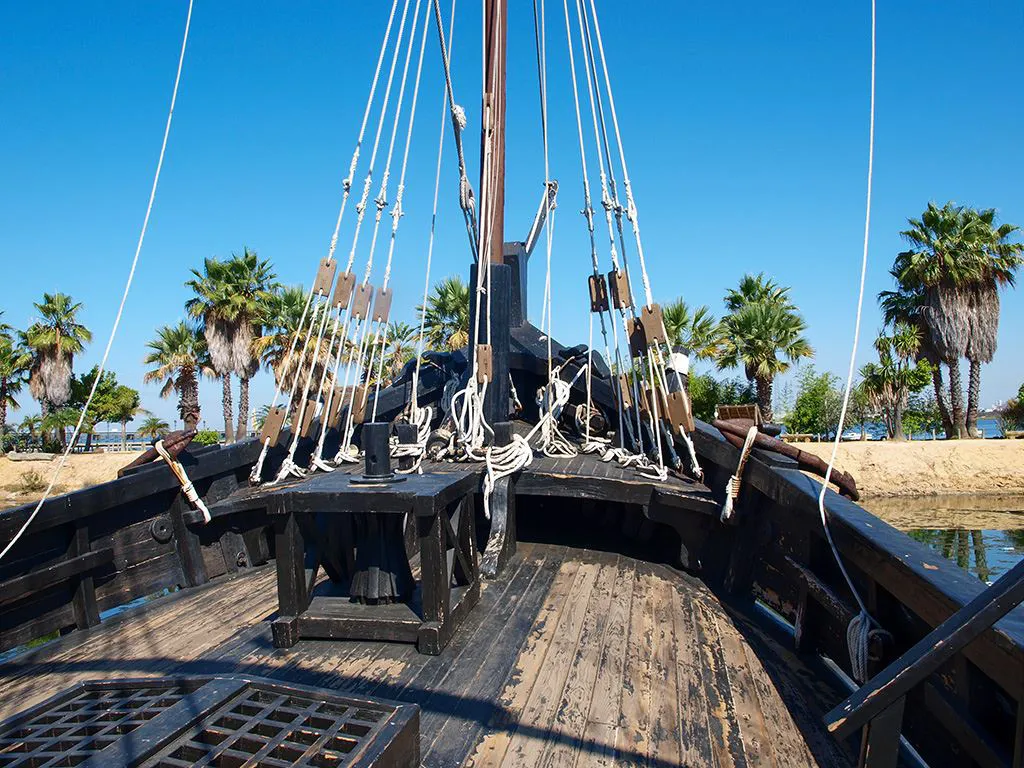
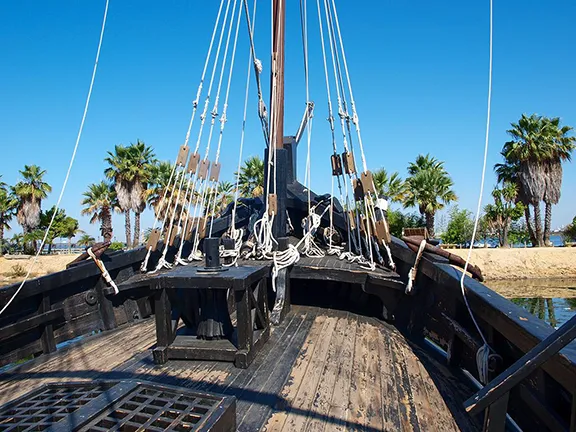
On Deck at Palos de la Frontera
The friary is situated on a hill overlooking the rivers Tinto and Odiel and the small, rustic, docks on the Rio Tinto itself. It was there that Columbus took delivery of three ships, the Santa Maria, Pinta and Nina. As was the custom of the day in Spain the names by which they were known was a nickname, not the name by which they were registered. The Nina was officially the Santa Clara and her nickname, Nina – girl, probably derives from her owners name Juan Nino de Moguer. The original name of the Pinta is not known. She was owned by Cristobal Quintero who allowed Martin Alonso Pinzon to take over the ship as Cristobal Quintero had no great faith in the seamanship of his namesake Columbus. The Santa Maria was, officially, La Santa Maria de la Inmaculada Concepcion and she was owned and mastered by Juan de la Cosa. Imagine gold leafing that name on the stern! On the 3rd August 1492 they set sail.

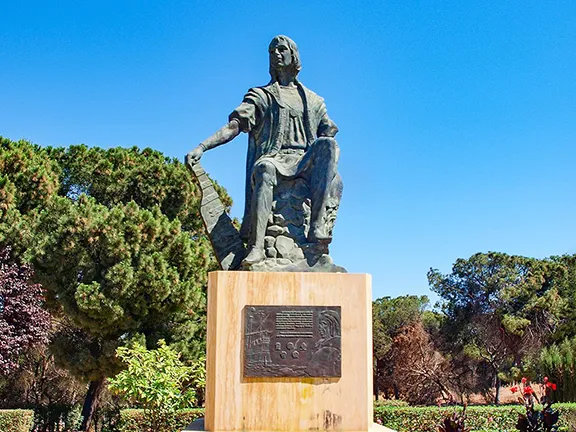
Christopher Columbus
An audio visual headset supplied at the entrance to La Rabida tells most of the story. It does fail to mention that Columbus took Franciscan friars with him and it was they who ministered to the natives that they found in the new lands. Whatever Francisco Jimenez de Cisneros had been promised or hoped for in return for helping Columbus he must have been rewarded many times over.
Returning to today. At the site of the original dock you will find a museum with reasonable displays of navigational instruments, charts, armour and models of 15th century ships. Alongside the dock there is a recreation of the stalls and victualling stations that may have existed in 1492 but the piece de resistance has to be the full size replicas of the carrack Santa Maria, and the caravels Nina and Pinta floating in the dock itself. It is only when you wander through these vessels that you realise how uncomfortable, hazardous and desperate a journey it was across the Atlantic in 1492. Columbus made three of those journeys and died still convinced he had found lands in the east.